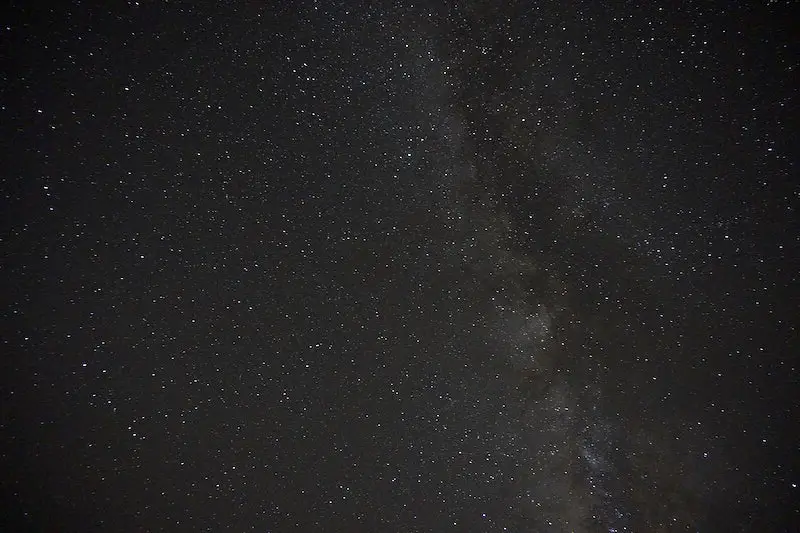Discover the 11 best stargazing spots worldwide for an enchanting cosmic adventure. Embrace the wonders of the night sky. #Stargazing
Welcome to a captivating journey through the cosmos. As someone who cherishes the breathtaking beauty of celestial wonders, I’ve compiled a list of the most exceptional stargazing experiences you can have.
Whether you’re into astrophotography or just want to enjoy the spectacle, we’ll explore the best spots and provide some helpful tips along the way. So, grab your telescope, pack your camping gear, and let’s get lost in the vastness of space together.
Are you ready to explore the galaxies while munching on stargazing snacks? Let’s dive in.
Stargazing is a magical experience that connects us with the universe on a profound level. There’s something awe-inspiring about witnessing distant stars, planets, and cosmic phenomena that have been shining for billions of years. It’s a humbling reminder of our place in the grand scheme of things.
In this guide, I’ll share the best stargazing spots around the world, offer practical tips for camping under the stars, and recommend useful tools and apps to enhance your celestial adventure. Whether you’re a seasoned astronomy enthusiast or a newbie eager to explore the cosmos, this article has something exciting in store for you.
Finding the Perfect Stargazing Spot
First things first, finding the ideal stargazing spot is crucial for an unforgettable experience. While stargazing can be enjoyable from the comfort of your backyard, getting away from city lights and light pollution can truly elevate the experience.
Picture yourself surrounded by the dark wilderness, millions of stars above you, and a hot cocoa mug in hand. Sounds magical, right?
1. Choose a Dark Sky Location:
Look for locations away from urban areas where light pollution obscures the stars. National parks, remote deserts, and secluded mountains are excellent choices. Websites like the International Dark-Sky Association can help you find designated dark sky parks and reserves.
2. Check the Weather:
Clear skies are essential for stargazing. Before heading out, check the weather forecast to ensure you’ll have a cloud-free night.
3. Avoid the Moon’s Bright Phases:
The moon’s brightness can wash out faint stars and celestial objects. Plan your stargazing adventure around the new moon phase when the sky is darkest.
4. Pack Essentials:
Bring camping gear, warm clothing, a comfortable camping chair, and a red flashlight (to preserve your night vision).
5. Respect Nature:
Leave no trace behind and respect the environment. Enjoy the beauty of nature without disturbing its delicate balance.
Camping Essentials for Stellar Nights
Camping and stargazing go hand in hand. To make the most of your experience, don’t forget these camping essentials: a cozy tent, a warm sleeping bag, campfire supplies, and a comfortable camping chair for lounging under the stars.
Imagine roasting marshmallows over a campfire as you wait for shooting stars to paint the sky. An unforgettable camping experience awaits.
1. Tent: Choose a reliable and spacious tent to protect you from the elements. Look for one with good ventilation to prevent condensation.
2. Sleeping Bag: Invest in a high-quality sleeping bag suitable for the weather conditions. A sleeping pad will add extra comfort.
3. Campfire Supplies: Gather firewood, matches, and fire-starting materials to create a cozy campfire. Don’t forget a fire extinguisher for safety.
4. Camping Chair: A comfortable camping chair will let you relax and gaze at the stars in style.
5. Stargazing Snacks: Pack some stargazing snacks like popcorn, trail mix, or your favorite cosmic-inspired treats.
Stargazing Tools and Apps to Aid Your Adventure
Gone are the days of deciphering star maps with a flashlight. Embrace the wonders of technology with astronomy apps that identify constellations, planets, and even satellites passing overhead.
Discover the cosmos at your fingertips. These apps will be your celestial tour guide as you navigate the skies.
1. Star Walk 2: This user-friendly app uses augmented reality to identify stars, constellations, and planets. Just point your phone at the sky, and it will guide you through the cosmos.
2. Stellarium: Stellarium offers a realistic view of the night sky and allows you to customize your location, date, and time. It’s perfect for planning your stargazing sessions in advance.
3. SkySafari: With SkySafari, you can explore the universe with a comprehensive database of celestial objects. It’s a great tool for both beginners and experienced astronomers.
4. NASA App: Stay updated with the latest news, images, and videos from NASA. The app also provides real-time satellite tracking for a unique stargazing experience.
5. Star Chart: Star Chart uses your device’s GPS and compass to show you what’s in the sky above you. Just point your phone, and the app will reveal the stars and planets you’re looking at.
11 Best Stargazing Spots Around the World
Let’s take a closer look at some of the best stargazing spots around the world, each offering a unique celestial experience.
1. Mauna Kea, Hawaii:
At an elevation of 13,796 feet (4,205 meters), Mauna Kea is one of the highest mountains on Earth. Its summit houses some of the world’s most advanced astronomical observatories. The clear skies and low light pollution make it a stargazer’s paradise. If you’re visiting, be sure to acclimate to the high altitude before stargazing.
2. Atacama Desert, Chile:
Known as the driest desert on Earth, the Atacama Desert offers an unparalleled view of the Milky Way. The clear, dry air and high altitude create a perfect environment for stargazing. The Elqui Valley is particularly famous for its dark skies and astronomical tourism.
3. NamibRand Nature Reserve, Namibia: T
he NamibRand Nature Reserve is a gold-certified International Dark Sky Reserve, meaning it boasts exceptional stargazing conditions. The vast desert landscapes and iconic red dunes provide a stunning backdrop for your cosmic adventure.
4. Aoraki Mackenzie International Dark Sky Reserve, New Zealand:
Located on New Zealand’s South Island, this reserve is a stargazer’s dream. The combination of clear skies, minimal light pollution, and breathtaking landscapes makes it one of the best places for stargazing in the Southern Hemisphere.
5. Cherry Springs State Park, Pennsylvania, USA:
Situated in the Pennsylvania Wilds region, Cherry Springs State Park is renowned for its dark skies and impressive stargazing opportunities. It’s one of the best spots for stargazing on the East Coast of the United States.
6. Galloway Forest Park, Scotland:
As the first Dark Sky Park in Scotland, Galloway Forest Park offers a stargazing experience like no other. The rugged Scottish landscape combined with dark skies creates a magical atmosphere for astronomy enthusiasts.
7. Wadi Rum, Jordan:
Also known as the “Valley of the Moon,” Wadi Rum’s desert landscapes have captivated stargazers for centuries. Sleeping under a vast canopy of stars amidst the timeless sand dunes is an experience not to be missed.
8. La Palma, Canary Islands:
La Palma is a stargazing paradise with well-equipped observatories, making it an essential destination for astronomers and astrophotographers. Its clear skies and low light pollution make it an exceptional spot for celestial observation.
9. Jasper National Park, Canada:
Nestled in the Canadian Rockies, Jasper National Park is designated as a Dark Sky Preserve. It offers incredible stargazing opportunities, especially during the Jasper Dark Sky Festival.
10. Teide National Park, Tenerife, Spain:
The Teide National Park is home to Mount Teide, the highest point in Spain. Its elevation and low light pollution create an excellent environment for stargazing. The park is also home to the Teide Observatory, one of the world’s most important solar observatories.
11. Sedona, Arizona, USA:
Known for its spiritual energy, Sedona’s dark skies enhance the spiritual connection with the cosmos. You can join local stargazing tours or explore the skies on your own from one of the scenic viewpoints.
FAQs: Your Burning Astronomy Questions Answered
Q: What is the best time to go stargazing?
The best time is during a new moon when the sky is darkest, making stars and constellations more visible.
Pro Tip: Keep an eye on meteor showers for extra celestial fireworks.
Q: Do I need a telescope for stargazing?
While a telescope enhances your experience, it’s not essential. You can enjoy stargazing with just your eyes.
Pro Tip: Binoculars can be a fantastic addition for a closer view of celestial objects.
Q: How can I capture stunning night sky photos?
To capture breathtaking shots, use a DSLR camera, a sturdy tripod, and long exposure settings.
Pro Tip: Experiment with different exposure times to capture the Milky Way’s beauty.
Q: What constellations can I see from the Northern Hemisphere?
Orion, Ursa Major, Cassiopeia, and the Big Dipper are some easily recognizable constellations.
Pro Tip: Use the “Connect the Dots” method to identify constellations.
Q: Can I stargaze in urban areas?
It’s challenging due to light pollution, but you can still spot bright planets and some stars.
Pro Tip: Find nearby parks or travel to a darker location for better stargazing.
Q: Are shooting stars real stars?
No, they are meteors – small debris that burns up as it enters Earth’s atmosphere.
Pro Tip: Make a wish when you see a shooting star.
Q: What are the best stargazing apps?
Stellarium, SkySafari, and Star Walk are fantastic apps for celestial navigation.
Pro Tip: Set your location for accurate stargazing information.
Q: What is the difference between a meteor and a comet?
Meteors are small rocks that burn up in the atmosphere, while comets are icy bodies that emit a tail.
Pro Tip: Watch out for comet sightings and meteor showers.
Q: How far away are stars?
Stars vary in distance, with the closest one (Proxima Centauri) about 4.24 light-years away.
Pro Tip: The light from stars takes years to reach us, so you’re looking back in time when stargazing.
Q: Can I see planets with a telescope?
A telescope allows you to observe planets like Jupiter, Saturn, Mars, and Venus.
Pro Tip: Planetary alignment events are great opportunities to observe multiple planets at once.
Q: How can I encourage others to stargaze?
Organize a stargazing party or share your passion through social media and storytelling.
Pro Tip: Share your stargazing photos and experiences with friends and family.
Curiosity is the key to understanding the cosmos. Keep asking questions and let the universe unveil its secrets.
Conclusion: Embrace the Cosmic Beauty
As our stargazing adventure comes to an end, I hope this guide inspires you to immerse yourself in the beauty of the night sky. The universe has so much to offer, and every stargazing experience is unique. Remember to preserve the darkness for future generations by supporting dark sky initiatives.
Now, gather your friends or go solo, head to a stargazing spot, and let the cosmos unfold its mysteries before your eyes. Happy stargazing.
Pro Tip: Stay patient, as the best stargazing experiences often come when you least expect them. Enjoy the journey, and the stars will reward you with their celestial beauty.
Quote of the day:
“We are all in the gutter, but some of us are looking at the stars.” – Oscar Wilde



